This was published 5 years ago
Cycling in southern Italy: Food, wine and afternoon naps in Puglia
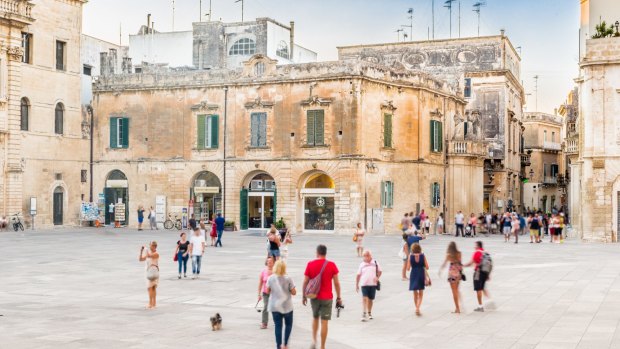
Ancient baroque palaces help make Lecce in Italy undeniably good-looking.Credit: Shutterstock
Cycling through Porta San Biagio, one of the ornate old city gates of Lecce, we bump gently along stone-paved alleys until we park up at Il Risorgimento Resort, a sleek modern hotel occupying one of the grand, yellow stone buildings that characterise this ravishingly photogenic city. We're at the halfway stage of our five-day biking tour of Puglia – a chunk of south-eastern Italy known as the "heel of Italy's boot" – and I'm lulled into a siesta. Delicious, filling lunches brimming with Pugliese produce and wines have been the norm on this trip with luxury operator Butterfield & Robinson, so an hour's shut-eye after our postprandial pedalling is hard to resist.
Refreshed from my nap, I stretch my (slightly stiff) legs on the hotel's panoramic rooftop terrace, gazing over Lecce's skyline as the sun sets, casting a golden glow on the sea of creamy buildings, before heading to the lobby where Paulo, a tall, charismatic Pugliese guide, is there to take our group on a twilight stroll. Regarded as one of Italy's most beautiful, his home city even boasts the sobriquet: "the Florence of the south". According to Paulo, though, while Lecce is undeniably good-looking, it also has a "strange side" and "plays tricks on you".
Paulo reveals its quirks while leading us through the maze-like, seductively-lit core of a city that was founded more than 2500 years ago and nestles above the ruined ancient Roman town of Lupaie. Having helped repel the invading fleets of the rampaging Ottoman Empire, Lecce flourished in the 16th and 17th centuries as a hotbed of trade, art and Christianity, and many of the princely buildings we see today – former merchants' houses, palaces and churches – were constructed in this era using "Lecce stone", a locally-mined limestone the texture of which allows it to be easily crafted into the decorative features of the Baroque style that was all the rage during Lecce's zenith.
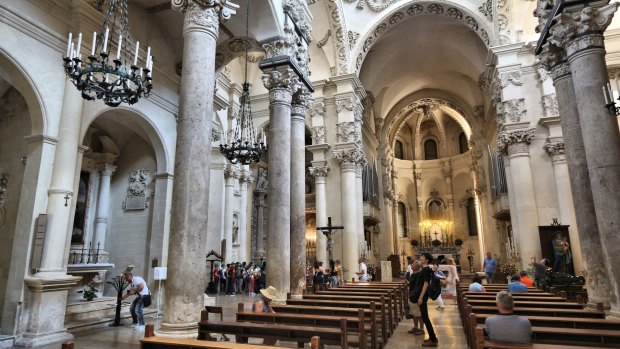
Basilica di Santa Croce in Lecce is a baroque landmark that dates back to 1695.Credit: Shutterstock
Eye-catching ornamentation – cherubs and mythical beasts, saints and angels – bless almost every building doorway and facade. Even the stone columns of iron balconies have a certain flair, supported by rows of sculpted fruit, horses and the like. "This was all done to attract attention, to pull in business. It was like the Instagram of its time," says Paulo.
The extravagance of building exteriors are matched by the interior design, too. Or so it appears. Stepping inside a handful of Baroque churches, including the imposing Duomo (cathedral), Paulo points out what look like grandiose wooden ceilings and statues and columns seemingly hewn from lavish marble. They're actually made of papier-mache. Paulo explains that as Lecce craftsmen often didn't have access to the finest materials, they adapted, using rags, glue, straw and plaster to create convincing substitutes. "In some ways, Lecce is an illusion," says Paulo.
By the time we say arrivederci at the city's vast sunken Roman amphitheatre – which was excavated during Mussolini's reign – Lecce has well and truly enchanted us. Besides its Baroque splendours, the city's laid-back air – spiked with the sound of purring scooters, soulful tunes from street musicians strumming harps, saxophones, guitars and banjos, and families and friends, locals and tourists, chatting as they wine and dine at alfresco bars and restaurants – elevates its appeal. So too do its various hole-in-the-wall artisan workshops and boutiques neatly piled with antiques, paintings, bags, jewellery, local truffles, wines and olive oil.
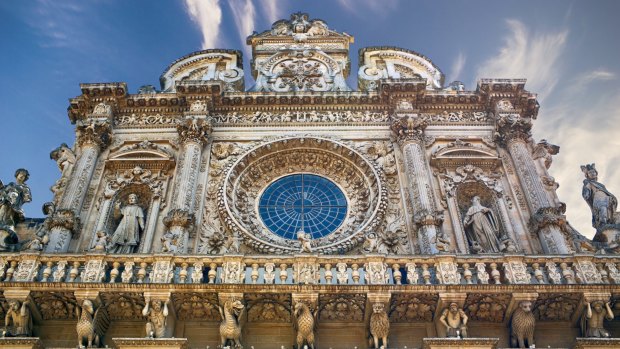
The stunning facade of Basilica di Santa Croce in Lecce.Credit: Shutterstock.com
Most nights on this Butterfield & Robinson tour, we're treated to fancy sit-down, multi-course meals. Tonight we're left to our own devices. At popular neighbourhood joint, Pizza & Co, I order three massive takeaway slices dripping with mozzarella, prosciutto and spicy sausage and tuck into them, while people-watching from the stone steps of the adjacent Santa Teresa Church. Then I embrace the passeggiata – that traditional leisurely evening stroll so beloved in Italy.
Ambling through Lecce's gorgeous web of streets, licking my panna cotta and coffee-flavoured gelato, I briefly ponder how many calories I've just consumed. Then I forget about it. After all, tomorrow morning, I'll be back on the saddle, burning them off as we continue our enthralling Pugliese adventure.
TRIP NOTES
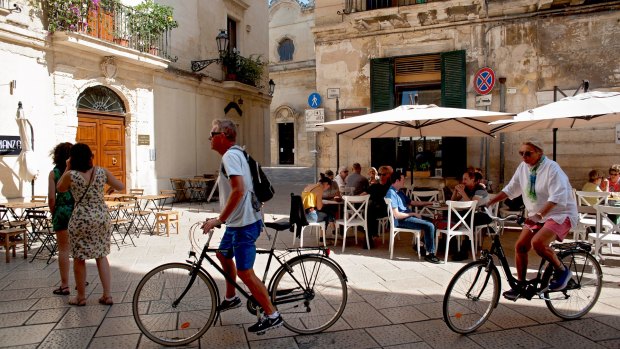
Tourists on bicycles explore the streets and squares of Lecce in Italy's southern region of Puglia.Credit: Shutterstock
Steve McKenna was a guest of Butterfield & Robinson.
MORE
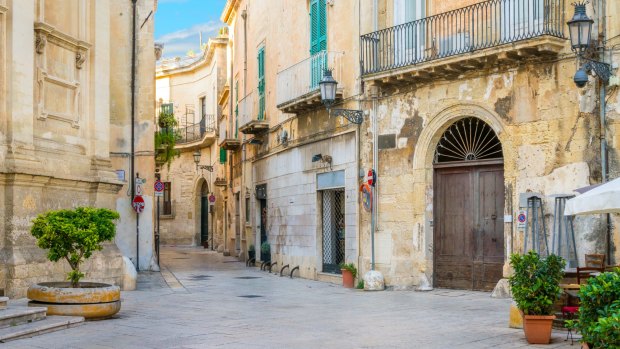
Lecce is considered 'the Florence of the south'.Credit: Shutterstock.com
TOUR
Butterfield & Robinson's guided Puglia Biking tour starts and finishes in the port cities of Brindisi and Bari. Priced from $US4495 ($6331), available between April and October, it includes a night's stay in Lecce and four nights' accommodation in upscale rural masserie (converted farmhouses). See butterfield.com
Sign up for the Traveller Deals newsletter
Get exclusive travel deals delivered straight to your inbox. Sign up now.